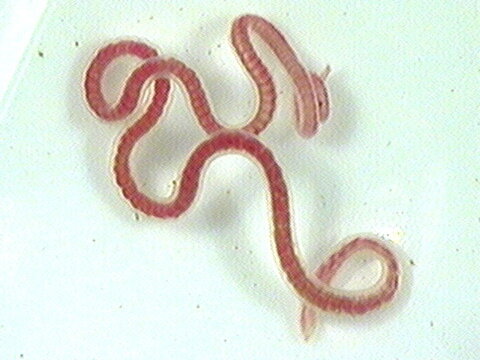Aquatic earthworm
See how they move!
SCIENTIFIC NAME: Oligochaeta
Number Of Species/Distribution
There are over 3100 species of terrestrial, marine, and freshwater oligochaetes worldwide.
Diet/Feeding
Most oligochaetes can be classified as predators or detritivores;
Predatory aquatic earthworms generally feed on small invertebrates such as tiny crustaceans and other worms.
Detritivorous aquatic earthworms consume decomposing organic material such as plant matter, decomposing organisms, faeces, and the bacteria that grows on these.
They feed by picking up food particles by protruding their pharynx (like a tongue) onto the food and then retracting the pharynx with the attached food particle back into their gut.
Habitat
Aquatic earthworms are benthic dwellers; living in the layer of organic debris on the bottoms of ponds and streams.
Some live deep within sediments while others inhabit the top layers of the benthic surface.
Others live among algal filaments, a few are tube dwellers, and some are parasitic; living off of other creatures.
AQUATIC EARTHWORM: INTERESTING FACTS
Some species create cysts to protect themselves from drying up if they are stranded above the waterline. Some species can survive 14 days with no moisture at all, and for up to 70 days if a little moisture is added periodically by rainfall.
Members of the genus Lumbriculus create cysts which are resistant to freezing as well as drought.
Each segment of an oligochaete functions more or less independently of the others, and has a fixed volume. A decrease in diameter of a particular segment must be accompanied by an increase in its length, and vice versa.
Most freshwater worms generally try to avoid bright light because they have simple photoreceptors distributed over the entire body surface.
Life Cycle
Most oligochaetes can reproduce both asexually (by themselves) and sexually (with a partner);Asexual Reproduction
Asexual reproduction occurs by one or more forms of transverse fission (the body splitting into two width wise).
Some undergo fragmentation at one or several points along the body, regenerating the missing parts to form new worms.
Budding can also occur, where new individuals bud out of the parent's body and eventually break free.
Rapid asexual reproduction usually occurs in early to mid summer. The worms take advantage of mild conditions and abundant food supplies; the offspring mature and reproduce sexually in the late summer and early fall, producing overwintering stages that hatch in the spring.
Asexual reproduction is usually a seasonal event, alternating with sexual activity.
Sexual Reproduction
Oligochaetes are hermaphroditic which means they have the sexual parts of both the male and female. When mating the pair can choose who will 'act' as the female or male.
Cross-fertilization occurs between mating pairs (they both fertilize eachother). The worms then separate, and eggs and sperm are combined internally, forming a cocoon that is deposited in benthic debris.
The embryos have no larval stage, and develop directly into juveniles over anywhere from one week to several months, depending on the species and environmental conditions. When conditions following cocoon deposition are relatively severe, development time is usually long enough to ensure that the juveniles hatch in the spring. When conditions are more stable, development time is shorter and reproduction is less seasonal.
Role in Food Chain
Oligochaetes are soft-bodied organisms, so easy prey for many other organisms, including fish, crustaceans, and leeches.
Sources
Brusca, R. C, and Brusca, G. J., 2003. Invertebrates, 2nd ed. Sinauer Associates, Inc., Publishers, Massachusetts. Pages 397, 404, 409, 427, 432.
Canada's Aquatic Environments (2002). Oligochaeta. Available here.
Waterwatch South Australia, Environmental Protection Authority (2006). Sponges, Hydras and Worms.




